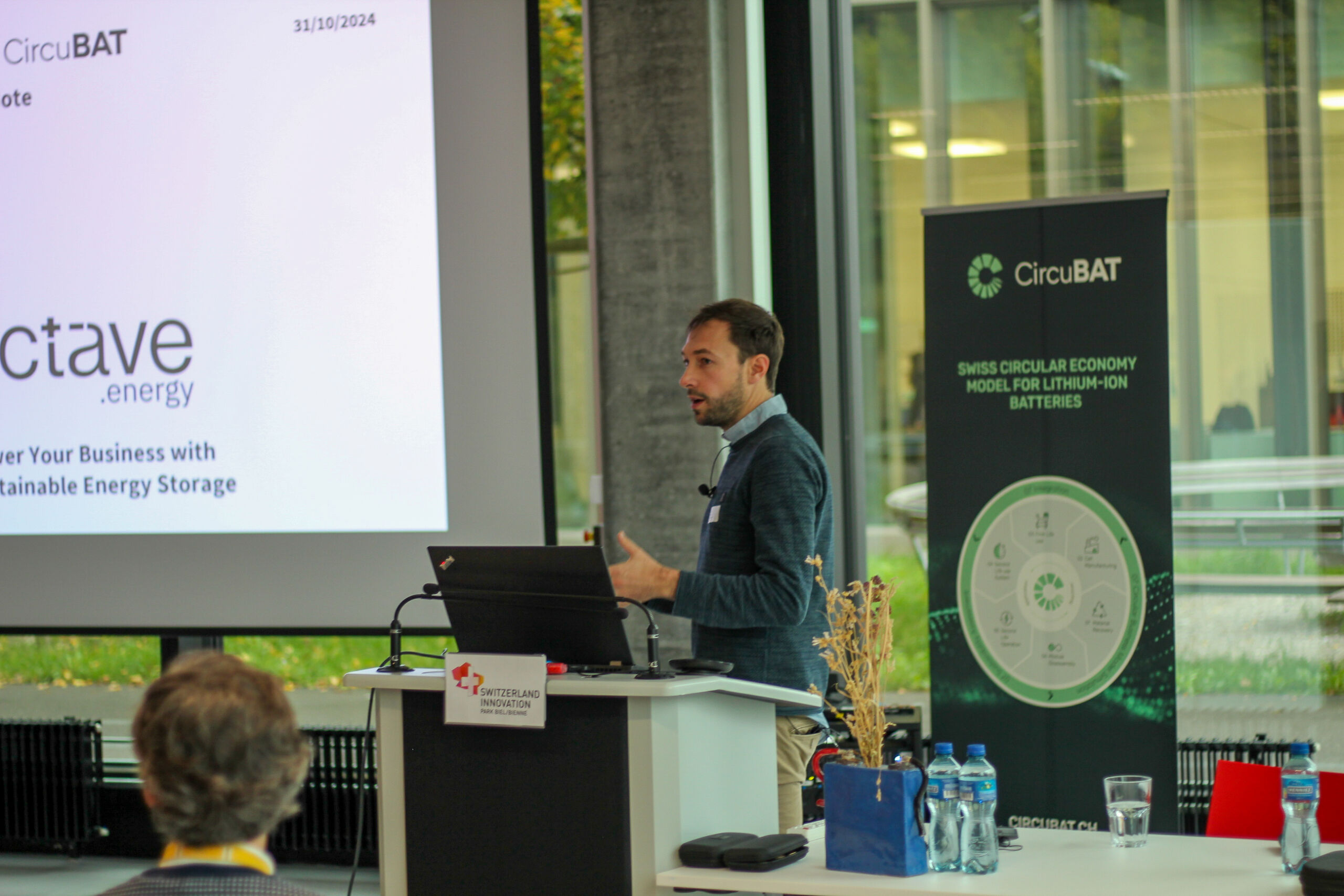The third annual conference in the Innosuisse flagship project CircuBAT, that has taken place at the end of October in the Switzerland Innovation Park Biel/Bienne, brought together the entire project team of 11 research and 24 implementation partners. The latest results were presented and discussed.
For example, researchers have found that a secondary source of Lithium can be identified in a water bath in the recycling process. The team is also heading on to produce first prototype pouch cells in the lab, implementing their first dry coated electrodes in fully functional Lithium-Ion Battery cells. Furthermore, the partners in the second life subprojects have decided to build the second life battery storage system based on a 11-feet overseas freight container and aim to put it in operation on Mont-Soleil, implemented in the Mont-Soleil Solar Express Project.
Last’ year’s virtual training of robots aiming to remove screws in used battery modules advanced to real actions of the robot on our partners modules, which could be witnessed at the lunchtime demonstration in the Swiss Smart Factory lab, where this year’s host Switzerland Innovation Park runs the Swiss Battery Technology Center.
The results from the various sub-projects and workshops are continuously being integrated into the life cycle analysis for batteries and the Swiss circular economy model for lithium-ion batteries from electromobility offering e.g. relevant volume estimations for business owners entering the recycling or repurposing market.
Keynote by Jonas Engels, CTO and Co-founder of Octave.Energy on Second Life Battery Energy Storage Systems
Another highlight of the event was the keynote presentation by Jonas Engels on the activities of his smart energy startup Octave.Energy, Brussels, Belgium. Octave.Energy provides second life BESS customized for Belgian SME’s, featuring local European manufacturers for all their system components, including their own BMS, except for the battery cells which are of Asian origin, but purchased from European automotive OEM. Economically, the provision of power/frequency control services to the Belgian grid operator based on Octave.Energy’s Energy Management System is key, as the revenue effectively reduces the payback time of the investment in Octave.Energy’s Second life BESS. However, given the long battery life of LFP cells and their rapidly decreasing price, it is very challenging to bring second life NMC cells to market, even though they are still of very high quality, i.e. SOH>95%. This is also because even new NMC batteries have only about a third of the cycle life of LFP, which results in an economic disadvantage in terms of maintenance costs of second life NMC batteries in stationary systems, as more frequent replacement of degraded battery modules is required.
Save the date: CircuBAT Final Conference
A workshop will follow in the fourth and last year of the project to refine the Swiss circular economy model for lithium-ion batteries. The latter as well as the technical innovations achieved will be presented to the public in the final event, taking place on November 13-14, 2025. More information to follow.


